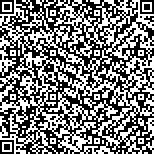本文已被:浏览 962次 下载 548次
Received:October 24, 2019 Published Online:June 20, 2020
Received:October 24, 2019 Published Online:June 20, 2020
中文摘要: 目的 研究复杂型热性惊厥(CFS)癫痫相关热点突变基因。方法 选取从2017年6月至2018年6月,于儿科门诊及病房住院治疗的复杂型热性惊厥患儿120例进行研究,记作病变组。另取同期进行体检的120例健康儿童作为对照组。提取所有入组儿童的全血DNA,进行已知致病基因的筛查,分析基因突变情况。并将病变组患儿按照基因突变类型的不同分成离子通道及受体相关基因突变与细胞因子基因突变,比较不同基因突变患儿的临床表型以及癫痫发生情况。结果 观察组SCN1A、SCN1B、SCN9A、GABRD、IL-4基因突变发生率均高于对照组(P<0.05)。离子通道及受体相关基因突变CFS患儿临床表型为热性惊厥(FS)的人数占比低于细胞因子基因突变患儿,而临床表型为热性惊厥附加症(FS+)、FS+伴全面性发作、FS+伴部分性发作的人数占比高于细胞因子基因突变患儿(P<0.05)。离子通道及受体相关基因突变与细胞因子基因突变CFS患儿癫痫发生率分别为10.26%、10.00%,对比不明显(P>0.05)。结论 CFS癫痫相关热点突变基因囊括SCN1A、SCN1B、SCN9A、GABRD、IL-4,其中离子通道及受体相关基因突变CFS患儿临床表型以FS+为主,而细胞因子基因突变变CFS患儿临床表型以FS为主。
Abstract:Objecitve To study the hot spot genes mutation related to epilepsy of children with complex febrile convulsions (CFS). Methods A total of 120 children with CFS treated from June 2017 to June 2018 were selected and designed as disease group, and 120 healthy children were served as control group at the same time.DNA extraction from whole blood were screened for mutations in the known pathogenic genes.According to the different types of gene mutations, the children in disease group were divided into ion channel and receptor gene mutations group(SCN1A, SCN1B, SCN2A, SCN9A, GABRG2, GABRD and CACNB4)and cytokine gene mutations group(IL-1Rα, IL-1β, IL-10 and IL-4).The clinical phenotype and the occurrence of epilepsy in children with different gene mutations were compared. Results The mutation rates of SCN1A, SCN1B, SCN2A, SCN9A, GABRG2, GABRD, IL-1Rα, IL-1β, IL-10 and IL-4 genes in disease group were statistically higher than those in control group (all P<0.05).The proportion of children with clinical phenotype of FS in CFS children with ion channel and receptor-related gene mutations was lower than that of CFS children with cytokine gene mutation, however, the proportion of clinical phenotype of FS+, FS+ with comprehensive onset and FS+ with partial onset was significantly higher than that of those with cytokine gene mutations (all P<0.05).There was no significant difference in the incidence of epilepsy in CFS children with ion channel and receptor-related gene mutations and with cytokine gene mutation (10.26% vs 10.00%, P>0.05). Conclusion The hot spot mutations genes related to epilepsy include SCN1A, SCN1B, SCN2A, SCN9A, GABRG2, GABRD, IL-1Rα, IL-1β, IL-10 and IL-4.The clinical phenotype is mainly FS+ in CFS patients with ion channel and receptor-related gene mutations and is mainly FS in CFS patients with cytokine gene mutations.
文章编号: 中图分类号: 文献标志码:B
基金项目:深圳市卫生计生系统科研项目(SZFZ2017006)
| Author Name | Affiliation |
| YANG Yu, HAO Jin-dou, ZOU Xin-ying, YAO Meng-lin | Shenzhen Maternal and Child Health Hospital Affiliated to Southern Medical University, Shenzhen, Guangdong 518028, China |
| Author Name | Affiliation |
| YANG Yu, HAO Jin-dou, ZOU Xin-ying, YAO Meng-lin | Shenzhen Maternal and Child Health Hospital Affiliated to Southern Medical University, Shenzhen, Guangdong 518028, China |
引用文本:
